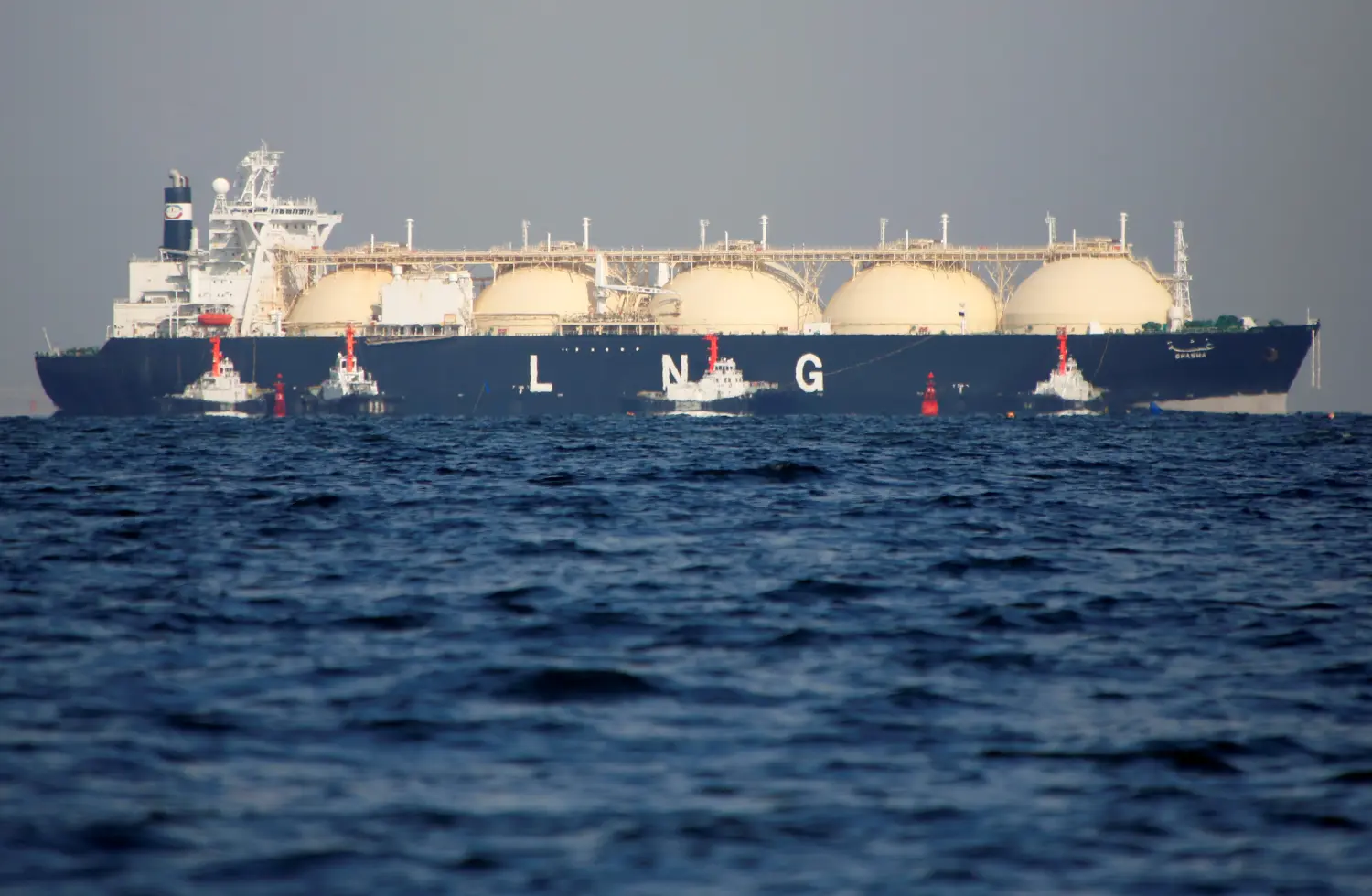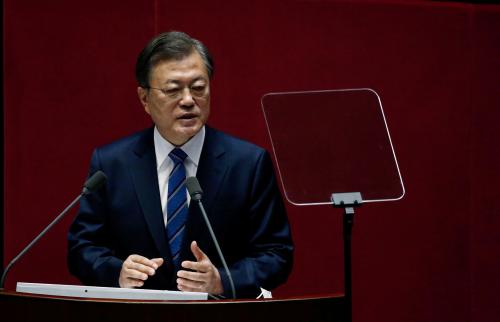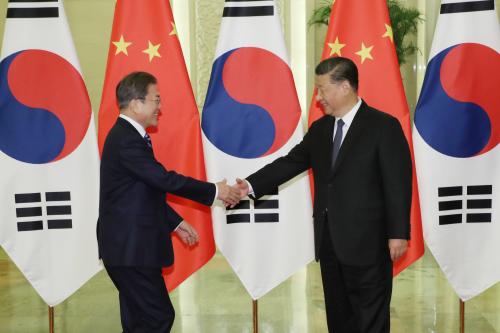This piece was originally published by the East Asia Institute (EAI) as part of a project with the Center for East Asia Policy Studies (CEAP) at Brookings examining prospects for U.S.-South Korea cooperation in an era of U.S.-China strategic competition. A webinar was hosted by CEAP and EAI on November 13, 2020 to discuss the issues presented in this and other project working papers.
Executive Summary
Energy security has long been an important geopolitical issue for the countries of east Asia. Rapid economic growth in the region over the past decades has only increased the prominence of the issue in the regions’ international affairs. Although primary energy demand in China is more than ten times that in South Korea, the energy systems of the two countries share important characteristics. Both countries import significant shares of their fuel, although for slightly different reasons.
With a population of over 1.4 billion people, China’s voracious demand for energy exceeds its domestic production. China’s energy imports meet 73% of oil demand and 42% of liquified natural gas (LNG) demand. China is the world’s largest coal importer, despite also being the world’s largest coal producer. Despite rapidly growing renewable electricity production, coal and oil dominate China’s primary energy supply, together meeting more than three-quarters of China’s primary energy demand.
Korea has few domestic sources of fossil fuels, and thus relies on imports for nearly all of its energy needs. The country is very densely populated, with more than 50 million people in a country roughly the size of the state of Indiana. Korea’s energy system is slightly more balanced than China’s. Oil is the largest source of primary energy, with a 43% share, followed by coal at 28%, natural gas at 16%, and nuclear at 11%.
Coal is a crucial part of both countries’ electricity supply. We hear a great deal about China’s reliance on coal, but Korea also relies on coal for more than 40% of its electricity generation, and is the world’s fourth largest coal importer. Both countries aim to reduce the prevalence of coal in their power sectors, replacing it with renewable power and natural gas. In Korea, the 8th Basic Plan for Long-term Electricity Supply and Demand, issued in December 2017, also focuses on reducing the share of nuclear power, which today provides 26% of its electricity.
As both China and Korea work to decrease the prevalence of coal, natural gas will become an increasingly important part of their energy portfolios. Liquefied natural gas (LNG) is an important area where the energy fortunes of China, Korea, and the United States intersect. Chinese demand and U.S. supply are both growing fast, with implications for Korea’s long-standing LNG market.







